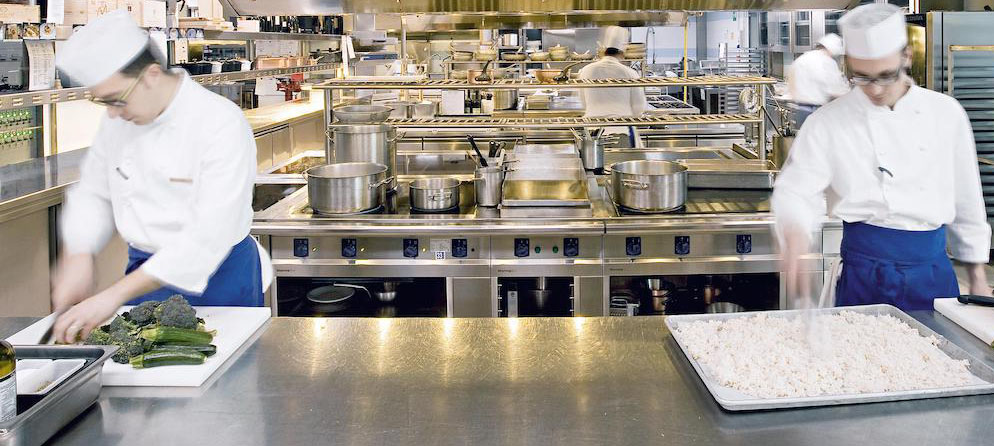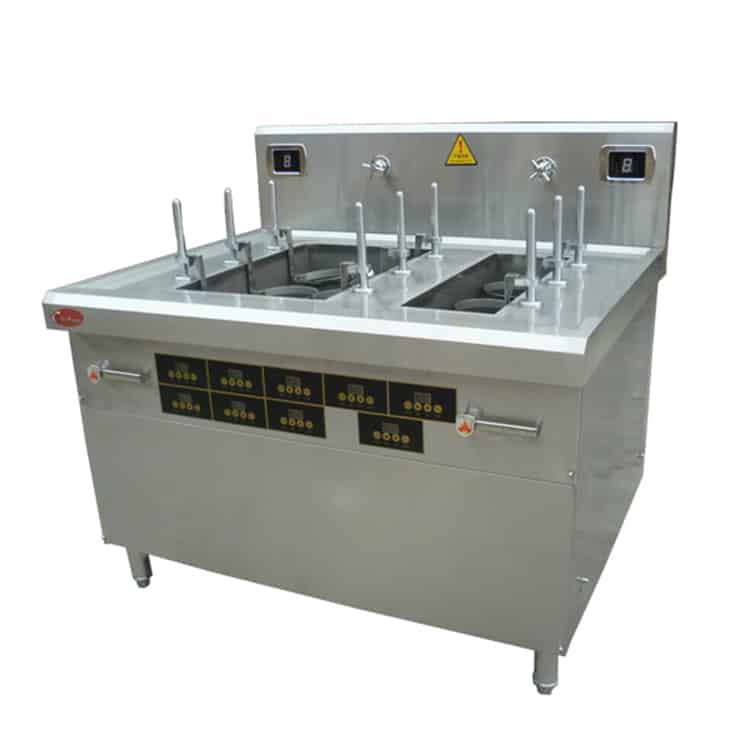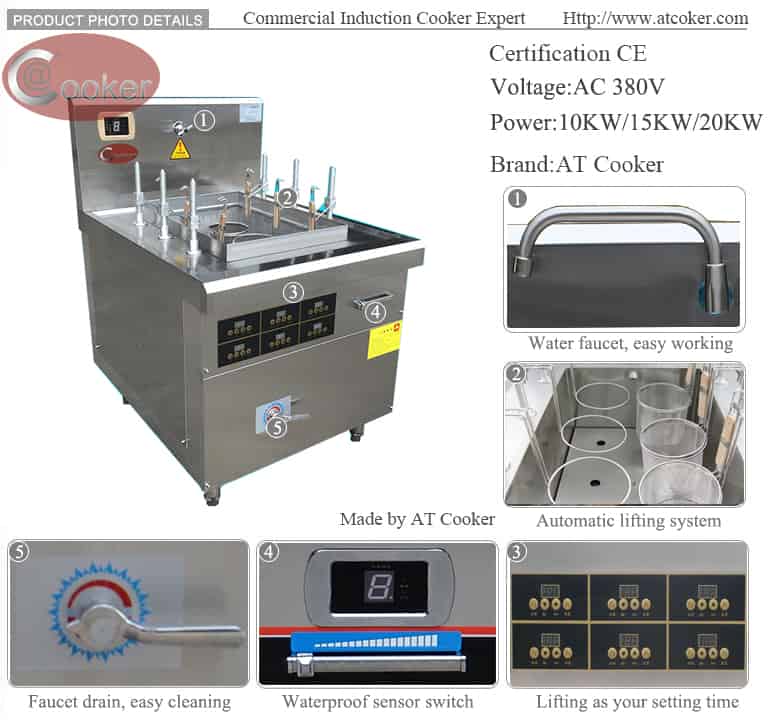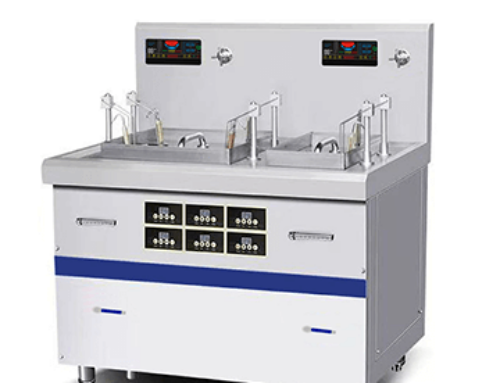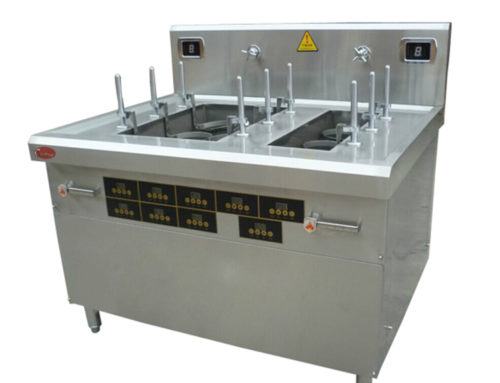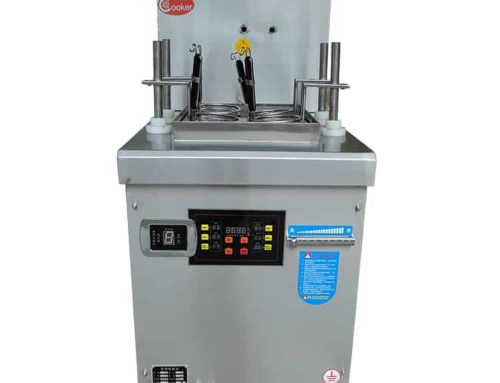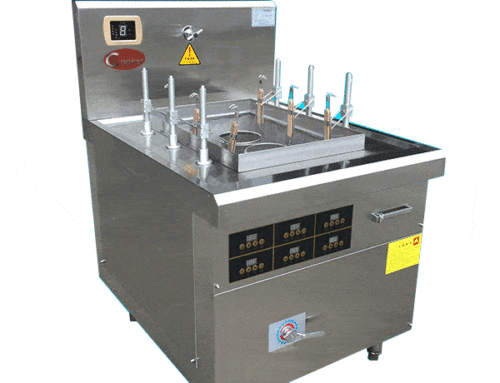Types of Pasta Boilers & the Best Choice for Commercial Use
For Italian restaurants, cafes, or catering companies, choosing the right pasta boiler can cut cooking time by 40% and reduce food waste by 30%—but picking the wrong type leads to bottlenecks and higher costs. AT Cooker’s 2024 survey of 150 commercial kitchen operators found that 62% of restaurants struggled with inconsistent pasta quality or slow service due to mismatched commercial pasta boiler models. This guide breaks down all major types of pasta cookers, their strengths, and which works best for your commercial needs—with real examples from AT Cooker’s top-selling models (like the ATT-APSD-A41 automatic pasta boiler) and feedback from clients who use our pasta boiler for restaurant units daily.
1. Electric Pasta Cookers: Precision & Energy Efficiency for Commercial Kitchens
Electric pasta cookers are the most common type for commercial use, thanks to their precise temperature control (critical for al dente pasta) and 90–95% energy efficiency—far higher than gas models (45–50%). AT Cooker’s electric pasta boiler lineup, including the ATT-APSD-A6 (15KW) and ATT-APSD-A41 (automatic), is designed for consistent performance in busy restaurants.
Key advantages of electric models:
- Precise temperature control: Maintain 212°F (boiling point) ±1°F, ensuring pasta cooks evenly every time. The ATT-APSD-A6 uses a sensor switch with 8 power levels, letting chefs adjust heat for delicate pastas (like angel hair) or thick varieties (like rigatoni).
- Low operational costs: A 15KW electric cooker used 8 hours/day costs ~$180/month (at $0.15/kWh), vs. $350/month for a gas model with similar capacity.
- Safety features: No open flame (reduces fire risk by 80%), plus anti-dry heating warnings and automatic shutoff—standard on all AT Cooker electric models.
A family-style Italian restaurant in Chicago uses 3 ATT-APSD-A41 electric cookers: “We used to burn 10% of our pasta with gas—now it’s less than 2%. The energy savings alone paid for the cookers in 6 months.”
2. Gas Pasta Boilers: Rapid Heating for High-Volume Operations
Pasta boiler commercial gas models are favored by high-volume restaurants (100+ pasta servings/day) for their rapid heat-up time—they reach boiling point 2–3 minutes faster than electric cookers. While less efficient, their speed makes them ideal for peak rushes (e.g., dinner service at a busy chain).
Key strengths of gas models:
- Fast heat recovery: When adding cold pasta or water, gas burners bounce back to boiling in 60 seconds—critical for back-to-back orders. A pizza chain in New York uses gas pasta boilers to keep up with 200+ pasta orders during Friday rush.
- No power dependency: Useful for kitchens with unreliable electricity or outdoor events (e.g., food festivals).
Gas models’ main drawbacks are higher energy costs and safety risks (open flame). AT Cooker recommends gas only for kitchens with dedicated ventilation and high volume—our gas commercial pasta boiler includes flame failure devices to cut gas flow if the flame goes out. A caterer in Florida noted: “We use a gas pasta boiler for outdoor events, but switch to AT’s electric model in the kitchen—faster cleanup and lower bills.”
3. Countertop Pasta Cookers: Compact for Small-to-Medium Restaurants
Countertop pasta cookers are space-saving solutions for cafes, bistros, or small Italian restaurants with limited floor space. AT Cooker’s ATT-APST-C5B table top pasta cooker (5KW, 23L capacity) is a top choice, measuring just 480×570×400mm—small enough to fit on standard kitchen counters.
Why countertop models work for commercial use:
- Space efficiency: Use vertical space instead of floor space—perfect for kitchens under 100 square feet. A café in Boston added an ATT-APST-C5B next to their espresso machine, doubling pasta output without expanding.
- Moderate capacity: 23L tanks hold 4–5 pounds of pasta at once, enough for 20–30 servings/hour. Ideal for medium-volume operations (50–80 pasta orders/day).
- Easy installation: Plug-and-play design—no need for complex gas lines or floor reinforcement. AT Cooker’s countertop models are ready to use in 15 minutes.
Countertop models aren’t ideal for high-volume kitchens (100+ servings/day)—they lack the capacity of floor models. A bistro owner in Seattle said: “The ATT-APST-C5B was perfect when we had 40 pasta orders/day, but we upgraded to a floor model once we hit 80—still love the countertop for slow mornings!”
4. Floor Model Pasta Boilers: Heavy-Duty Capacity for Large Commercial Use
Floor model pasta boilers are the workhorses of large restaurants, banquet halls, and hotel kitchens—they offer 50L+ capacity and are built for 12+ hours of daily use. AT Cooker’s ATT-APSD-A41 automatic pasta boiler (15KW, 40L capacity) is designed for this demand, with a stainless steel frame that supports 100+ pounds of pasta and water.
Key benefits of floor models:
- High capacity: 40L tanks cook 10–12 pounds of pasta at once, handling 80–120 servings/hour. A hotel in Las Vegas uses 2 ATT-APSD-A41 models to serve 300+ pasta dishes at weddings.
- Durable construction: 304# stainless steel bodies resist rust and impact—AT Cooker’s floor models last 7+ years, vs. 3–4 years for budget brands.
- Automatic features: The ATT-APSD-A41 includes auto water fill (prevents dry boiling) and auto basket lift (raises pasta when done), cutting labor by 2 hours/day.
Floor models need 3–4 square feet of space and 3-phase power (208V/240V for North America), so they’re best for planned kitchen layouts. A chain restaurant in Texas said: “We redesigned our kitchen to fit 4 AT floor pasta boilers—they handle 150+ orders/day with no downtime.”
5. Round Commercial Pasta Boilers: Even Cooking & Easy Stirring
Round commercial pasta boiler models have cylindrical tanks that ensure even heat distribution and easy stirring—critical for long pastas (like spaghetti) that can clump in square tanks. AT Cooker’s round models, such as the ATT-APST-C5 (23L), are popular with traditional Italian restaurants.
Advantages of round design:
- Even cooking: Heat circulates 360° around the tank, so no pasta sticks to cold corners. A trattoria in Chicago switched to a round boiler: “Our spaghetti used to have cold ends—now every strand is al dente.”
- Easy maintenance: Smooth curved surfaces are easier to clean than square corners—no burnt-on pasta trapped in crevices. AT Cooker’s round tanks wipe clean in 2 minutes, vs. 5 minutes for square models.
Round models are available in both countertop (23L) and floor (40L) sizes, making them versatile for most commercial kitchens. A chef in New York noted: “Round boilers are non-negotiable for authentic Italian pasta—you can’t stir spaghetti properly in a square tank.”
“We’ve used square pasta boilers for 10 years, and we always had to stir constantly to prevent clumping. AT Cooker’s round boiler changed that—we stir once when adding pasta, and that’s it. Saves us 1 hour of labor per day!” — Marco, Trattoria Owner
6. Multi-Tank Pasta Cookers: Simultaneous Cooking for Different Pasta Types
Multi-tank pasta cookers have 2–4 separate tanks, letting kitchens cook different pasta types (or sauces) at once—ideal for restaurants with diverse menus. AT Cooker’s ATT-APSD-A9 (15KW+8KW) has two tanks, each with independent temperature controls.
Why multi-tank models excel in commercial use:
- Menu flexibility: Cook spaghetti in one tank and ravioli in another—no more waiting for one batch to finish. A fusion Italian restaurant in Los Angeles uses the ATT-APSD-A9 to cook pasta and Asian noodles simultaneously.
- Reduced cross-contamination: Separate tanks prevent allergen cross-contact (e.g., gluten-free pasta in one tank, regular in another). Critical for compliance with food safety standards.
Multi-tank models cost 30% more than single-tank ones but save 2–3 hours of cooking time daily. A restaurant owner in Miami said: “We used to cook pasta in batches—now we do 4 types at once. Our table turnover rate increased by 25%.”
7. Key Features That Define the Best Commercial Pasta Cooker
Beyond type, the best commercial pasta boiler has features that boost efficiency and safety—all standard on AT Cooker models:
- Automatic water fill/drain: The ATT-APSD-A41 auto-fills to the correct level and drains wastewater with a faucet—no manual lifting of heavy tanks.
- Integrated baskets: 4 included baskets (standard on ATT-APST-C5B) let you cook and drain pasta in one step—cuts retrieval time by 50%.
- Timers: 10-hour digital timers (all AT models) prevent overcooking—set it and focus on other tasks.
- Stainless steel construction: 304# steel resists grease and rust, and is dishwasher-safe for parts like baskets.
Budget cookers lack these features—leading to more labor and waste. A café owner in Portland said: “Our old pasta cooker had no timer—we overcooked 15% of our pasta. AT’s timer and auto-drain saved us from that.”
Which Commercial Pasta Cooker Is Best for You?
The best pasta boiler depends on three factors: kitchen volume, space, and energy source. Use this guide to choose:
| Kitchen Type | Best Pasta Cooker Type | AT Cooker Model | Why It Works |
|---|---|---|---|
| Small café/bistro (20–50 servings/day) | Countertop electric | ATT-APST-C5B (5KW, 23L) | Space-saving, plug-and-play, low energy use |
| Mid-size restaurant (50–100 servings/day) | Single-tank floor electric | ATT-APSD-A6 (15KW, 30L) | Balances capacity and space, precise control |
| Large restaurant/banquet (100+ servings/day) | Multi-tank floor electric/gas | ATT-APSD-A9 (15KW+8KW, 40L×2) | High capacity, simultaneous cooking |
| Outdoor catering/food trucks | Portable gas/countertop electric | ATT-APST-C5 (5KW, 23L) + gas adapter | Compact, no fixed power needed |
For most commercial kitchens, electric models are the best choice—they’re more efficient, safer, and easier to maintain. Gas models work only for high-volume operations with dedicated ventilation.
AT Cooker Suggestions
Before buying a commercial pasta boiler, calculate your daily pasta servings and measure available space—this avoids buying a model that’s too small (causes bottlenecks) or too large (wastes space). If you’re unsure, start with a countertop model (like the ATT-APST-C5B) and upgrade to a floor model as your business grows.
AT Cooker’s team can help you assess your needs—we offer a free kitchen layout tool to visualize where the pasta cooker will fit, and a savings calculator to show how much you’ll cut energy costs. All our pasta boiler for restaurant models come with a 2-year warranty and free installation support—so you can start cooking with confidence.
Final Recommendation
For 90% of commercial kitchens, an electric floor or countertop pasta boiler from AT Cooker is the best choice. Our models balance capacity, efficiency, and safety—critical for consistent pasta quality and lower costs. Whether you’re a small café or a large banquet hall, we have a pasta cooker that fits your needs.
Get a Custom Pasta Boiler Recommendation
Share your daily pasta servings, kitchen space, and energy source (electric/gas), and we’ll suggest the perfect commercial pasta cooker for your business.
